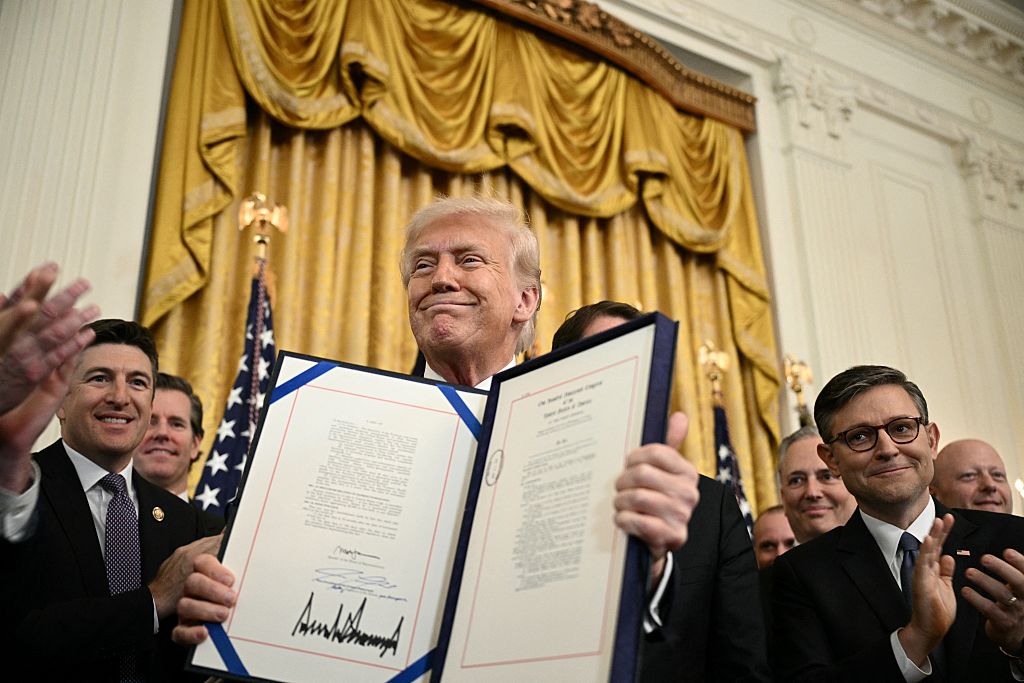Vanquishing the virus: the race to make vaccines for Covid-19
The extraordinarily rapid development of effective treatments against the coronavirus is a triumph of biotechnology, says Dr Mike Tubbs. He reviews the story and explains what it means for investors.


Many MoneyWeek readers will have had their first Covid-19 vaccine jab by now; a few will have had their second. The advent of the vaccines is a story of clever biotechnology deployed with lightning speed, illustrating the sector’s rapid development over the last two decades. The Covid-19 virus was only sequenced (genetically mapped) in mid-January 2020 and the first two vaccines approved in the UK were the Pfizer/BioNTec treatment in early December 2020 and the AstraZeneca/Oxford University one in late December – 11 and 12 months later respectively.
The International Federation of Pharmaceutical Manufacturers & Associations says that the normal timescale for vaccine development is between ten and 15 years. Prior to the Covid-19 vaccines, the record for vaccine development was four years for the mumps treatment, which emerged in 1967.
The Pfizer/BioNTec and Moderna vaccines use similar mRNA technology, whereas the AstraZeneca/Oxford one uses a viral-carrier approach. All three vaccines benefited from previous research on two other coronaviruses, Severe Acute Respiratory Syndrome (Sars), which emerged in China in 2003, and Middle East Respiratory Syndrome (Mers) which jumped from camels to humans in 2012. Covid, Sars and Mers are called coronaviruses because of the spikes on their surface that resemble a crown under the microscope.
MoneyWeek
Subscribe to MoneyWeek today and get your first six magazine issues absolutely FREE

Sign up to Money Morning
Don't miss the latest investment and personal finances news, market analysis, plus money-saving tips with our free twice-daily newsletter
Don't miss the latest investment and personal finances news, market analysis, plus money-saving tips with our free twice-daily newsletter
The breakthrough in mRNA technology
The story of mRNA starts in 1990. Synthetic messenger RNA, or mRNA, is a clever variation on the natural RNA that directs protein production in the body’s cells. The promise of the technology has always been that a modified form of it could be injected into the body to transform body cells into drug factories producing the right antibodies (proteins developed by the body that defend the immune system).
This was the idea that Hungary’s Katalin Karikó had while she was at the University of Pennsylvania in 1990. Her grant applications to develop the technology were all rejected for the reason that synthetic RNA was known to be vulnerable to the body’s defences, so it could be destroyed before reaching its target cells and that could cause an immune response that might have serious consequences for some patients. But Karikó persisted and was even demoted by her university for not bringing in enough research grant money.
With a collaborator at her university, Drew Weissman, she solved the problem. Every strand of mRNA is made up of four parts called nucleosides, and one of these was triggering the immune response. Karikó’s solution was to replace the problem nucleoside with a slightly modified version to make an mRNA that could work its way into cells without triggering the problematic immune response. Karikó and Weissman described their discovery in several papers published in 2005 and later.
Surprisingly, it was only scientists at two small biotechs – the founders of Moderna and BioNTec – who realised the enormous potential of Karikó’s discovery and both set about exploiting it by developing the technology to make mRNA medicines. When Covid-19 came along they both realised that an mRNA vaccine could be effective against the new virus. The vaccine is just a piece of mRNA inside a coating. The mRNA contains the code for a protein of the spikes of the Covid-19 virus. So once the mRNA enters cells, the cells produce this virus protein and the immune system recognises it as a foreign molecule and the body produces antibodies to fight it.
The AstraZeneca/Oxford approach
The AstraZeneca/Oxford vaccine uses a different technology based on the use of a carrier virus, a virus used to insert a gene into cells. Genetic code of the Covid-19 spike-protein is added to the carrier virus so when the carrier virus enters body cells, the spike-protein’s genetic code makes the cells produce the surface spike protein of the coronavirus. This produces an immune response so the immune system can attack the Covid-19 virus should it later enter the body.
The AstraZeneca/Oxford vaccine uses a carrier virus that is a weakened form of the virus causing the common cold in chimpanzees. The carrier virus is in fact isolated from chimpanzee stools and has been genetically altered so it cannot multiply in humans. Oxford University had already used this carrier-virus technology to make candidate vaccines against flu and Mers. This enabled the team to make a flying start on developing their Covid-19 vaccine.
The Medicines and Healthcare products Regulatory Agency (MHRA) realised how important it was going to be to approve new vaccines as quickly as possible without prejudicing safety and therefore devised a new method of rolling approval. This involved the regulator examining clinical trial results as they came in rather than waiting until all results had been gathered before starting regulatory examination.
Covid-19 vaccines were also approved under emergency-use regulations requiring companies to conduct follow-up surveys to look for side-effects and monitor efficacy in the field. The MHRA approved the Pfizer jab on 2 December 2020 and the US Food and Drug Administration on 8 December. In terms of vaccine rollout in large countries the UK is leading with 18% of its population vaccinated by 9 February; the US follows with 9%. In the EU the figure is 2.4%-2.8%.
The problem with mRNA vaccines is that they must be stored and transported at very low temperatures. The Pfizer vaccine must be transported in dry ice (implying a temperature of -78 degrees centigrade) and stored between -80C and -60C. This compares with domestic freezer temperatures of -23C to -18C. Once the vaccine is removed from storage, it can be kept in a refrigerator (2C to 8C) only for up to 120 hours. These requirements make it difficult to use in less developed countries and in many doctors’ surgeries.
The Moderna vaccine, however, is less sensitive to heat and only requires storage at freezer temperatures (-25C to -15C). It can live in a fridge for up to 30 days. The AstraZeneca/Oxford vaccine, on the other hand, can be transported and stored at refrigerator temperature for at least six months. The AstraZeneca treatment costs £3 per jab in the UK. The Pfizer and Moderna jabs cost £15 and a reported £26 respectively. Clinical trials show that the Pfizer/BioNTec and Moderna mRNA vaccines are up to 95% effective from a week after the second dose. The AstraZeneca vaccine is up to 90% effective after two doses spaced well apart. Some of the clinical trial volunteers were given a half dose followed by a full dose and this was more effective than two full doses.
However, it transpired that the half-dose cohort were in fact given their second doses after a longer delay and it was probably the delay rather than the half-dose that increased effectiveness. This conveniently ties in with the UK government’s decision to delay second doses of all vaccines so they are given 12 weeks after the first. The AstraZeneca vaccine gives 76% effectiveness after the first jab.
Modifications will beat mutations
The AstraZeneca vaccine is effective against the dominant “Kent” variant in the UK, but a small South African study suggests it offers minimal protection against mild infections from the South African variant (although it seems to be effective against serious ones). Oxford/AstraZeneca have started adapting their vaccine to the South African variant. The modified vaccine will be ready by the autumn.
Both types of vaccine should be quickly modifiable to be effective against mutations of the Covid-19 virus. This is because mutations have differences in the surface-spike proteins, which enable them to bind better onto the surfaces of body cells. Both types of vaccine contain genetic code from the spike protein. So to fend off the mutation, code from a mutant strain needs to be inserted into the vaccine instead of code from the original coronavirus. Regulators believe that only a small clinical trial involving a few hundred volunteers will be needed to assure safety and effectiveness of such modified vaccines.
More treatments are on the way
Three other vaccines are well advanced in clinical trials and are likely to be approved for use in the UK. They are from Novavax, Valneva and Johnson & Johnson (J&J). The J&J vaccine uses a similar technology to the AstraZeneca one, based on a carrier-virus the company developed for its Ebola vaccine. Valneva’s vaccine is of a more conventional type, using an inactivated virus, whereby the virus is killed with heat or chemicals and its dead cells are introduced into the body; the immune system is instructed how to fight live versions of it in the future. The Novavax vaccine is a recombinant vaccine: it uses a specific fragment of the coronavirus that acts as the foreign antigen for the immune system to react against. This virus fragment is inserted into cells to make them produce large quantities of active ingredient for the vaccine. The hepatitis-B vaccine uses similar recombinant technology.
What this means for investors
Investment analysis and fund platform Morningstar estimates that global herd immunity to Covid-19 should be reached by 2023, with peak vaccine sales in 2021 and 2022 sales at 40% of 2021’s. The coronavirus vaccines represent only small proportions of the turnover of large pharmaceutical companies such as Pfizer or AstraZeneca, so one does not expect vaccine approval or vaccine orders to have much effect on their share prices, which have changed little since November, while Moderna’s stock has rocketed from $18 to $170 in a year. Long-term investment returns from Moderna depend on the firm finding new valuable medicines using its mRNA technology. But for now AstraZeneca (LSE: AZN) appears good value with a recent share price of 7,340p versus Morningstar’s estimate of fair value of 8,360p, while the same applies to Pfizer (NYSE: PFE), with a price of $34.9 compared with Morningstar’s fair-value estimate of $40.
Get the latest financial news, insights and expert analysis from our award-winning MoneyWeek team, to help you understand what really matters when it comes to your finances.
Highly qualified (BSc PhD CPhys FInstP MIoD) expert in R&D management, business improvement and investment analysis, Dr Mike Tubbs worked for decades on the 'inside' of corporate giants such as Xerox, Battelle and Lucas. Working in the research and development departments, he learnt what became the key to his investing; knowledge which gave him a unique perspective on the stock markets.
Dr Tubbs went on to create the R&D Scorecard which was presented annually to the Department of Trade & Industry and the European Commission. It was a guide for European businesses on how to improve prospects using correctly applied research and development.
He has been a contributor to MoneyWeek for many years, with a particular focus on R&D-driven growth companies.
-
 Boost for over 100,000 families on Child Benefit as new HMRC payment system rolled out
Boost for over 100,000 families on Child Benefit as new HMRC payment system rolled outThousands of households will no longer have to pay the dreaded High Income Child Benefit Charge through self-assessment
-
 Are you being haunted by the ghost of Christmas past? How festive cutbacks could boost your long-term wealth
Are you being haunted by the ghost of Christmas past? How festive cutbacks could boost your long-term wealthThe average family spends around £1,000 over the Christmas season. Here’s how much you could have gained if you had invested some of the money instead.
-
 Stock markets have a mountain to climb: opt for resilience, growth and value
Stock markets have a mountain to climb: opt for resilience, growth and valueOpinion Julian Wheeler, partner and US equity specialist, Shard Capital, highlights three US stocks where he would put his money
-
 The steady rise of stablecoins
The steady rise of stablecoinsInnovations in cryptocurrency have created stablecoins, a new form of money. Trump is an enthusiastic supporter, but its benefits are not yet clear
-
 SRT Marine Systems: A leader in marine technology
SRT Marine Systems: A leader in marine technologySRT Marine Systems is thriving and has a bulging order book, says Dr Michael Tubbs
-
 Goodwin: A superlative British manufacturer to buy now
Goodwin: A superlative British manufacturer to buy nowVeteran engineering group Goodwin has created a new profit engine. But following its tremendous run, can investors still afford the shares?
-
 A change in leadership: Is US stock market exceptionalism over?
A change in leadership: Is US stock market exceptionalism over?US stocks trailed the rest of the world in 2025. Is this a sign that a long-overdue shift is underway?
-
 A reckoning is coming for unnecessary investment trusts
A reckoning is coming for unnecessary investment trustsInvestment trusts that don’t use their structural advantages will find it increasingly hard to survive, says Rupert Hargreaves
-
 Metals and AI power emerging markets
Metals and AI power emerging marketsThis year’s big emerging market winners have tended to offer exposure to one of 2025’s two winning trends – AI-focused tech and the global metals rally
-
 8 of the best houses for sale with beautiful fireplaces
8 of the best houses for sale with beautiful fireplacesThe best houses for sale with beautiful fireplaces – from a 15th-century cottage in Kent to a 17th-century palazzo in Oxfordshire
